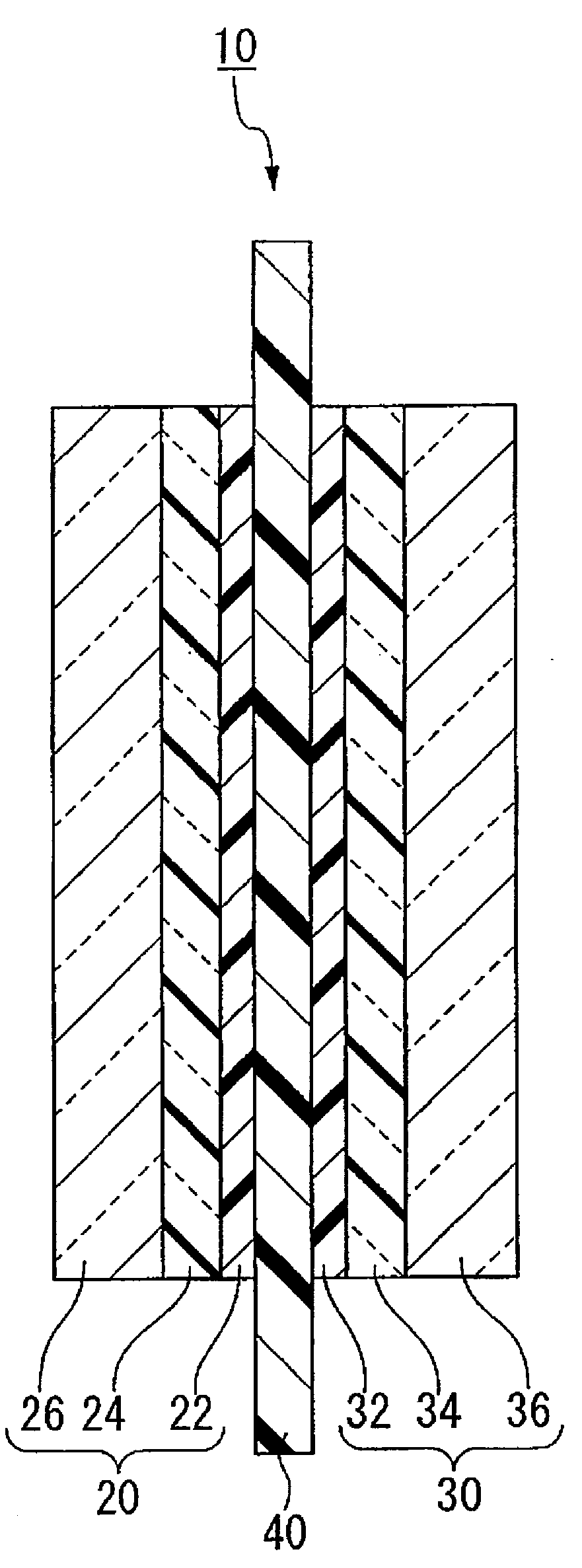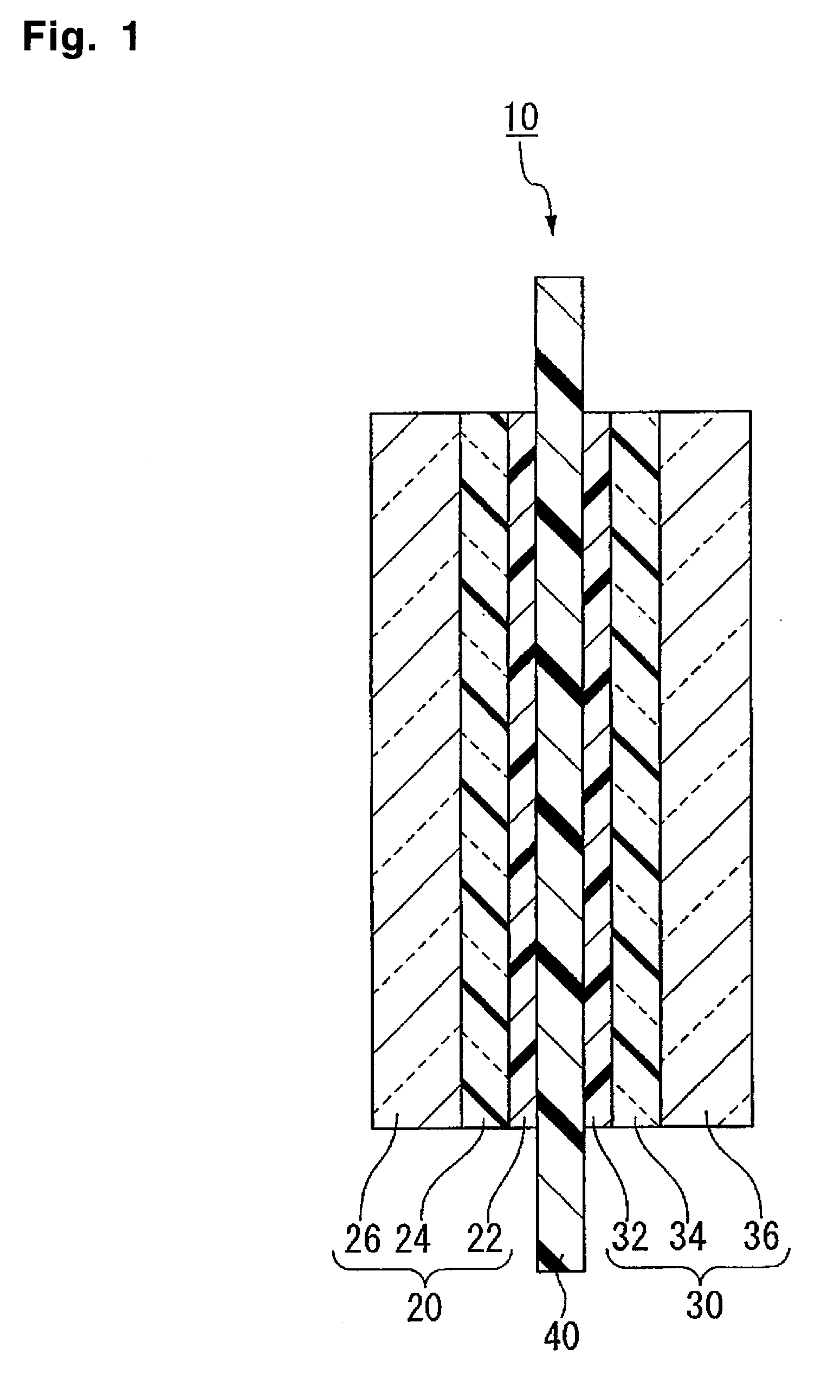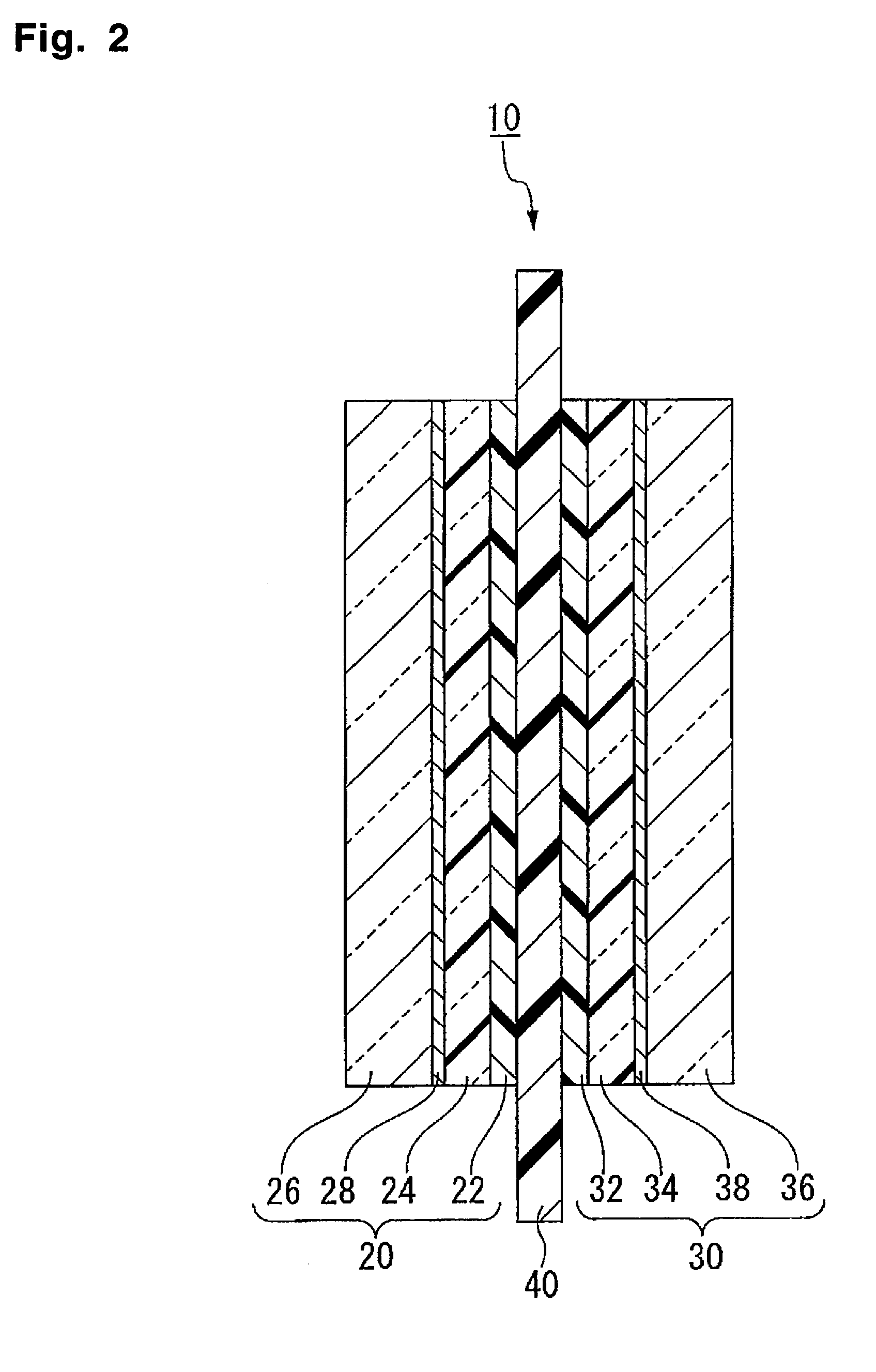Membrane/electrode assembly for polymer electrolyte fuel cells and polymer electrolyte fuel cell
a technology of electrolyte fuel cells and electrolyte fuel cells, which is applied in the direction of fuel cells, fuel cell details, solid electrolyte fuel cells, etc., can solve the problems of poor handling efficiency, prone to swelling and shrinkage, and polymer electrolyte membranes are likely to break, etc., to achieve sufficient mechanical strength and dimensional stability, high power generation performance, and excellent durability
- Summary
- Abstract
- Description
- Claims
- Application Information
AI Technical Summary
Benefits of technology
Problems solved by technology
Method used
Image
Examples
examples
[0274]Now, the present invention will be described in further detail with reference to Examples. However, it should be understood that the present invention is by no means thereby restricted.
[0275]Examples 1 to 5, 9 to 16 and 18 to 21 are Examples of the present invention, and Examples 6 to 8 and 17 are Comparative Examples.
[0276]EW
[0277]EW of the polymer (P) was obtained by the following method.
[0278]Two types of polymers, of which EW is preliminarily known by titration (one having EW of 1,000 g / equivalent, and one having EW of 909 g / equivalent) were prepared, and with respect to two types of membranes made of the respective polymers (thickness: 200 μm), the peak intensities based on sulfur atoms were measured by means of fluorescent X-ray (RIX3000, manufactured by Rigaku Corporation), whereupon a calibration curve showing the relation between the peak intensity and EW was prepared. The polymer (P) was pressed at a temperature of the after-mentioned TQ value to prepare a membrane h...
preparation example
[0307]By the following synthesis route, the compound (m12) was prepared.
Preparation of Compound (a2)
[0308]The compound (a2) was prepared in the same manner as the method disclosed in Example 2 in JP-A-57-176973.
Preparation of Compound (c2)
[0309]Into a 300 cm3 four-necked round-bottomed flask equipped with a Dimroth condenser, a thermometer, a dropping funnel and a glass rod with stirring vanes, 1.6 g of potassium fluoride (CHLOROCATCH F, manufactured by Morita Chemical Industries Co., Ltd.) and 15.9 g of dimethoxyethane were charged in a nitrogen atmosphere. Then, the round-bottomed flask was cooled in an ice bath, and 49.1 g of the compound (b11) was dropwise added from the dropping funnel over a period of 32 minutes at an internal temperature of at most 10° C. After completion of the dropwise addition, 82.0 g of the compound (a2) was dropwise added over a period of 15 minutes from the dropping funnel. No substantial increase in the internal temperature was observed. After completi...
example 1
Step (I)
Preparation of Polymer (P1)
[0316]An autoclave (internal capacity: 2,575 cm3, made of stainless steel) was flushed with nitrogen and sufficiently deaerated. Under reduced pressure, 950.3 g of the compound (m12), 291.4 g of the compound (m21), 490.1 g of the compound (3-1) as a solvent, 173.7 mg of methanol and 873.1 mg of the compound (4) (Peroyl IPP, manufactured by NOF Corporation) as a radical initiator, were charged, and inside of the autoclave was deaerated to vapor pressure.
CClF2CF2CHClF (3-1)
(CH3)2CHOC(═O)OOC(═O)OCH(CH3)2 (4)
[0317]The internal temperature was raised to 40° C., and TFE was introduced into the autoclave to adjust the pressure to 0.44 MPaG (gauge pressure). While the temperature and the pressure were maintained to be constant, polymerization was carried out for 6.0 hours. Then, inside of the autoclave was cooled to terminate the polymerization, and the gas in the system was purged.
[0318]The reaction liquid was diluted with the compound (3-1), and then, ...
PUM
| Property | Measurement | Unit |
|---|---|---|
| length | aaaaa | aaaaa |
| diameter | aaaaa | aaaaa |
| pore diameter | aaaaa | aaaaa |
Abstract
Description
Claims
Application Information
 Login to View More
Login to View More - R&D
- Intellectual Property
- Life Sciences
- Materials
- Tech Scout
- Unparalleled Data Quality
- Higher Quality Content
- 60% Fewer Hallucinations
Browse by: Latest US Patents, China's latest patents, Technical Efficacy Thesaurus, Application Domain, Technology Topic, Popular Technical Reports.
© 2025 PatSnap. All rights reserved.Legal|Privacy policy|Modern Slavery Act Transparency Statement|Sitemap|About US| Contact US: help@patsnap.com



